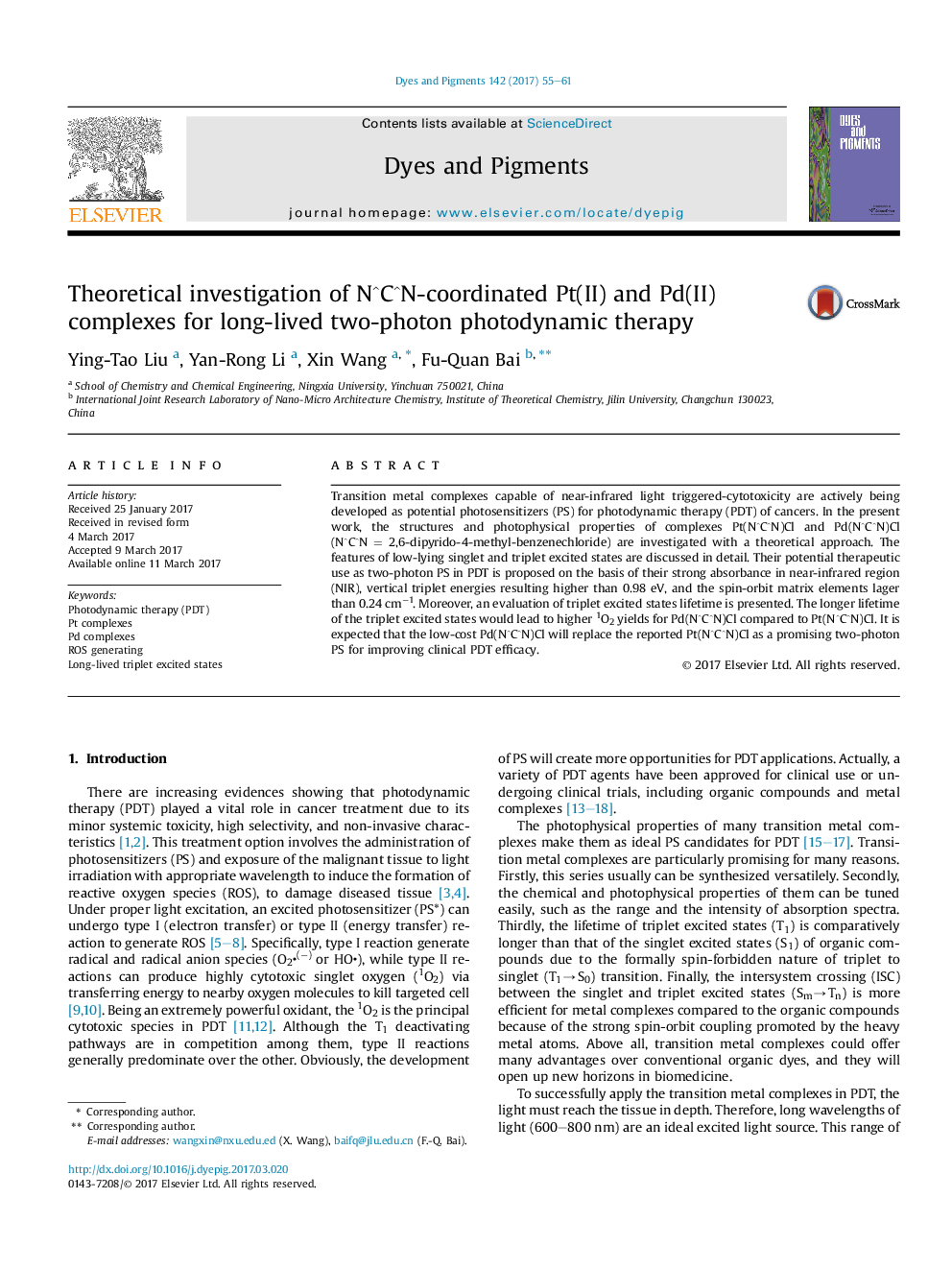| Article ID | Journal | Published Year | Pages | File Type |
|---|---|---|---|---|
| 6469332 | Dyes and Pigments | 2017 | 7 Pages |
â¢Pd(NËCËN)Cl is fully characterized and first proposed as two-photon Ps.â¢Pd(NËCËN)Cl can replace Pt(NËCËN)Cl as promising Ps due to longer T1 lifetimes.â¢Pd(NËCËN)Cl is found to be more effective and economical than Pt(NËCËN)Cl for PDT.
Transition metal complexes capable of near-infrared light triggered-cytotoxicity are actively being developed as potential photosensitizers (PS) for photodynamic therapy (PDT) of cancers. In the present work, the structures and photophysical properties of complexes Pt(NËCËN)Cl and Pd(NËCËN)Cl (NËCËNÂ =Â 2,6-dipyrido-4-methyl-benzenechloride) are investigated with a theoretical approach. The features of low-lying singlet and triplet excited states are discussed in detail. Their potential therapeutic use as two-photon PS in PDT is proposed on the basis of their strong absorbance in near-infrared region (NIR), vertical triplet energies resulting higher than 0.98Â eV, and the spin-orbit matrix elements lager than 0.24Â cmâ1. Moreover, an evaluation of triplet excited states lifetime is presented. The longer lifetime of the triplet excited states would lead to higher 1O2 yields for Pd(NËCËN)Cl compared to Pt(NËCËN)Cl. It is expected that the low-cost Pd(NËCËN)Cl will replace the reported Pt(NËCËN)Cl as a promising two-photon PS for improving clinical PDT efficacy.
Graphical abstractDownload high-res image (81KB)Download full-size image
